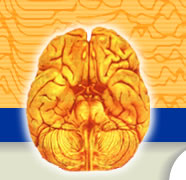HIGHER STATES OF CONSCIOUSNESS
Travis, F., Tecce, J., Arenander, A, and R. Wallace, Patterns of EEG coherence, power, and contingent negative variation characterize the integration of transcendental and waking states, Biological Psychology 61: 293-319, 2002.
Travis, F., Arenander, A. and D. DuBois, Psychological and physiological characteristics of a proposed object-referral/self-referral continuum of self-awareness. Consciousness and Cognition, 13(2):401-420, 2004.
 Arenander, A. and F. Travis, Brain Patterns of Self-awareness, In Self-Awareness Deficits in Psychiatric Patients: Assessment and Treatment, Editors: Bernard D. Beitman & Jyotsna Nair, W.W. Norton & Company, Inc, New York, January 2005 Paperback, 320pp. Arenander, A. and F. Travis, Brain Patterns of Self-awareness, In Self-Awareness Deficits in Psychiatric Patients: Assessment and Treatment, Editors: Bernard D. Beitman & Jyotsna Nair, W.W. Norton & Company, Inc, New York, January 2005 Paperback, 320pp.
Travis, F., and A. Arenander, Meditation-Effects on Frontal EEG Patterns and Personality Traits: Longitudinal Investigation of the Influence of Transcendental Meditation Practice on Interhemispheric Alpha Asymmetry and Broadband Coherence, Biological Psychology Submitted, 2004.
Patterns of EEG coherence, power, and contingent negative variation characterize the integration of transcendental and waking states
Abstract: Long-term meditating subjects report that transcendental experiences (TE), which first occurred during their Transcendental Meditation (TM) practice, now subjectively co-exist with waking and sleeping states. To investigate neurophysiological correlates of this integrated state, we recorded EEG in these subjects and in two comparison groups during simple and choice contingent negative variation (CNV) tasks. In individuals reporting the integration of the transcendent with waking and sleeping, CNV was higher in simple but lower in choice trials, and 6 /12 Hz EEG amplitude and broadband frontal EEG coherence were higher during choice trials. Increased EEG amplitude and coherence, characteristic of TM practice, appeared to become a stable EEG trait during CNV tasks in these subjects. These significant EEG differences may underlie the inverse patterns in CNV amplitude seen between groups. An ‘Integration Scale,’ constructed from these cortical measures, may characterize the transformation in brain dynamics corresponding to increasing integration of the transcendent with waking and sleeping.
Psychological and physiological characteristics of a proposed object-referral/self-referral continuum of self-awareness
Abstract: This research extends and confirms recent brainwave findings that distinguished an individual’s sense-of- self along an Object-referral/Self-referral Continuum of self-awareness. Subjects were interviewed and were given tests measuring inner/outer orientation, moral reasoning, anxiety, and personality. Scores on the psychological tests were factor analyzed. The first unrotated PCA component of the test scores yielded a ‘‘Consciousness Factor,’’ analogous to the intelligence ‘‘g ’’factor, which accounted for over half of the variance among groups. Analysis of unstructured interviews of these subjects revealed fundamentally different descriptions of self-awareness. Individuals who described themselves in terms of concrete cognitive and behavioral processes (predominantly Object-referral mode) exhibited lower Consciousness Factor scores, lower frontal EEG coherence, lower alpha and higher gamma power during tasks, and less efficient cortical preparatory responses (contingent negative variation). In contrast, individuals who described themselves in terms of an abstract, independent sense-of-self underlying thought, feeling and action (pre- dominantly Self-referral mode) exhibited higher Consciousness Factor scores, higher frontal coherence, higher alpha and lower gamma power during tasks, and more efficient cortical responses. These data suggest that definable states of brain activity and subjective experiences exist, in addition to waking, sleeping and dreaming, that may be operationally defined by psychological and physiological measures along a continuum of Object-referral/Self-referral Continuum of self-awareness.
Brain Patterns of Self-awareness
Introduction (partial): What is the nature of self awareness? The Oxford English Dictionary (OED) indicates that there are two modes of self-awareness: awareness with and awareness without content. The distinction is evident among the list of six definitions of self-awareness. The first five involve the process of experience: (1) interpersonal cognitive relations, (2) remembering on a first-hand basis one’s past actions or experiences, (3) awareness of any object; (4) immediate awareness of one’s mental processes, and (5) the totality of mental experiences that constitute our conscious being. Consistent with most chapters in this book, self-awareness thus refers to the content of conscious experience. The sixth definition in the OED offers a broader sense of self-awareness: (6) the general mode of awareness that is distinct from the content that makes up the stream of consciousness.
We suggest that this last definition of self-awareness—as awareness distinct from the content that makes up the stream of consciousness—may be the ‘ground’ of all experiences of self-awareness. As the ground of experience, we suggest that this putative foundational level of self-awareness needs to be appreciated to fully understand both so-called normal as well as dysfunctional modes of self-awareness, as presented in other chapters in this book. Thus, this chapter serves to introduce the concept of a foundational state of self-awareness, which is both independent of and the source of conscious experiences. This chapter also explores brain states that may differentiate the foundational state of self-awareness from its derivative, diverse modes represented by the major states of consciousness—waking, dreaming and sleeping—as well as the various types of waking self-reflective awareness related to body and environmental awareness. |
